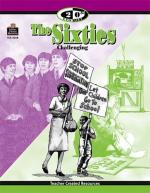|
This section contains 446 words (approx. 2 pages at 300 words per page) |

|
Stratigraphy and Seriation.
Archaeologists and anthropologists have always had difficulty trying to determine how old something is. At first, they used a technique called stratigraphy, based on the assumption that older things tend to be buried under newer things. A technique called seriation is a little more sophisticated. It assumes things get more complex over time. Radiocarbon dating was developed in the 1940s, but its use is limited to material that has been alive at some time.
Thermoluminescence.
Two new techniques to date old, nonliving material were developed in 1960: thermoluminescence and obsidian dating. Thermoluminescence can be used accurately to date rocks and pottery as far back as one thousand years. All rocks and pottery contain small amounts of radioactive elements. Over time the radioactive elements decay, giving off electrons in the process. These electrons get trapped within solid material. When a piece...
|
This section contains 446 words (approx. 2 pages at 300 words per page) |

|




